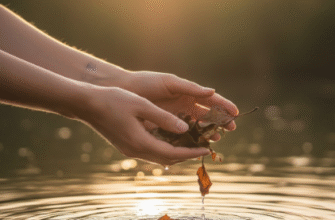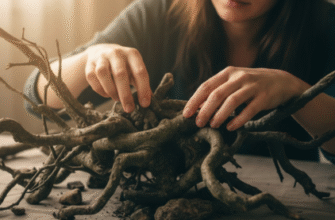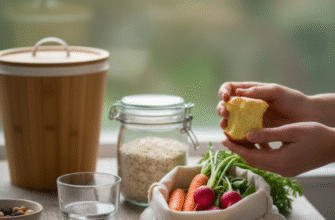There’s something undeniably cozy and comforting about the soft glow and gentle fragrance of a scented candle. Lighting one can instantly transform the atmosphere of a room, making it feel more relaxing, festive, or romantic. While store-bought candles are readily available, crafting your own offers a unique satisfaction. You get to choose the exact scents, colors, and containers, creating something truly personal. Plus, it’s a wonderfully creative hobby that’s surprisingly straightforward once you know the basics. Forget complex chemistry; making lovely scented candles at home is achievable and fun, provided you prioritize safety.
Why Bother Making Your Own Candles?
Beyond the sheer fun of a creative project, there are practical reasons to dive into DIY candle making. Firstly, customization is king. You’re not limited by what’s on the shelves. Want a specific blend of lavender and cedarwood in a vintage teacup? You can make it! Prefer a subtle, natural beeswax scent in a simple jar? Done. Secondly, it can be more economical in the long run, especially if you love burning candles regularly. Buying supplies in bulk often works out cheaper than purchasing individual high-end candles. Lastly, handmade candles make incredibly thoughtful and personal gifts. Knowing you poured your time and creativity into it makes the gift even more special.
Gathering Your Candle Making Arsenal
Before you start melting and pouring, you’ll need to assemble your kit. Don’t be intimidated by the list; many items are reusable, and you can start with the basics.
The Essentials:
- Wax: The heart of your candle! For beginners, soy wax flakes are highly recommended. They are relatively inexpensive, burn cleanly, hold fragrance well, and are easy to work with and clean up (just soap and hot water!). Other options include paraffin (traditional, good scent throw but petroleum-based), beeswax (natural, subtle honey scent, more expensive), or coconut wax blends. Start simple with soy.
- Wicks: These aren’t just pieces of string! The wick’s size must match your container’s diameter to ensure an even burn. Too small, and it’ll tunnel; too large, and it’ll smoke and burn too fast. Look for pre-tabbed wicks sized appropriately for your chosen containers. Cotton or wood wicks are common choices. Check the supplier’s guide for sizing recommendations based on jar diameter.
- Fragrance: This is where the magic happens! You can use essential oils or synthetic fragrance oils. Fragrance oils specifically designed for candle making generally provide a stronger, more reliable scent throw and are formulated to bind well with wax and burn safely. Essential oils can be used, but their scent might be weaker or alter when heated, and some aren’t suitable for burning. Always use oils rated for candle use.
- Containers: Choose heat-resistant containers like glass jars, mason jars, tins, or ceramic pots. Ensure they are clean, dry, and free of cracks or chips. Thrift stores can be great places to find unique, heat-safe vessels.
- Melting Pot & Heat Source: Never melt wax directly on a stovetop burner! You need a double boiler setup. This can be a dedicated wax melting pot or simply a heatproof pitcher or pouring pot placed inside a larger saucepan filled with a few inches of simmering water. This gentle, indirect heat prevents scorching and potential fire hazards.
- Thermometer: Absolutely crucial for safety and success. A digital candy thermometer or a dedicated wax thermometer works perfectly. Different waxes have specific melting points and temperatures for adding fragrance and pouring. Guessing can lead to poor results or safety issues.
- Stirring Utensil: A silicone spatula, wooden stick, or metal spoon dedicated to candle making. Avoid plastic that could melt.
- Wick Holders/Centering Tools: These keep your wick upright and centered while the wax cools. Clothespins laid across the jar top, chopsticks taped together, or commercial wick centering tools all work well.
- Scale: Accuracy matters! Measuring wax and fragrance oil by weight (not volume) ensures consistent results and proper fragrance load. A simple digital kitchen scale is perfect.
Optional Extras:
- Candle Dye: Liquid or chip dye specifically for candles can add a pop of color. A little goes a long way!
- Warning Labels: Essential if gifting or selling, but also good practice for personal use. Include burning instructions and safety warnings.
- Rubbing Alcohol & Paper Towels: For cleaning containers thoroughly before starting.
Safety First: The Golden Rules of Candle Making
Working with hot wax requires caution. Always prioritize safety to ensure your candle-making journey is enjoyable and accident-free.
- Never Leave Melting Wax Unattended: Treat it like cooking oil on the stove. Step away for a second, and things can go wrong quickly.
- Use Indirect Heat Only: Always use a double boiler setup. Direct heat can cause wax to overheat rapidly, potentially igniting. Wax is flammable at high temperatures.
- Monitor Temperature: Use your thermometer constantly. Don’t let the wax exceed its flash point (the temperature at which vapors can ignite – check your specific wax type, but generally keep it well below 200°F or 93°C unless instructions specify otherwise).
- Keep Water Away: Water added to hot wax can cause it to splatter violently, like hot oil. Ensure your melting pot and containers are completely dry.
- Protect Your Workspace: Cover surfaces with newspaper or cardboard. Wax spills happen, and this makes cleanup much easier.
- Handle with Care: Use oven mitts or pot holders when handling the hot melting pot and pouring hot wax. Containers will get hot too.
- Ventilation: Work in a well-ventilated area, especially when adding fragrances, to avoid inhaling concentrated fumes.
- Fire Safety: Keep a fire extinguisher (Class B for flammable liquids) or a box of baking soda nearby, just in case. Never use water to extinguish a wax fire.
Hot wax requires your full attention. Never melt wax directly on a flame or electric burner; always use a double boiler. Keep children and pets away from the work area. Remember that wax is flammable at high temperatures, so careful temperature monitoring with a thermometer is non-negotiable for safety.
Let’s Make a Candle: Step-by-Step
Ready to pour? Here’s a basic guide using soy wax flakes and a pre-tabbed wick.
1. Preparation is Key:
Clean your chosen container thoroughly with soap and water, then dry it completely. Wiping the inside with rubbing alcohol can help ensure good adhesion for the wick sticker. Cover your work surface.
2. Secure the Wick:
Attach the metal tab of your pre-tabbed wick to the bottom center of the container. You can use a hot glue gun (a small dot) or a dedicated wick sticker. Press down firmly.
3. Center the Wick:
Pull the wick taut and straight. Lay your wick centering tool (clothespin, chopsticks, etc.) across the rim of the container and secure the top of the wick in the center. Ensure it stays centered and upright.
4. Measure Your Wax:
Place your pouring pitcher on the digital scale and tare it (zero it out). Measure the required amount of soy wax flakes by weight. A general rule is to fill your container with flakes twice (volume) to estimate the weight needed, then add a little extra. Check your wax supplier’s guidelines for more precise calculations, often based on the container’s volume capacity in ounces or ml.
5. Melt the Wax Gently:
Set up your double boiler: place the pouring pitcher with the wax flakes inside the larger saucepan containing a few inches of water. Heat the water over medium heat. Do NOT let the water boil vigorously or splash into the wax. Stir the wax occasionally as it melts. Clip your thermometer to the side of the pitcher, ensuring the tip is submerged in wax but not touching the bottom.
6. Monitor Temperature & Add Fragrance:
Heat the soy wax according to its specific instructions (typically around 180-185°F or 82-85°C, but always check your supplier’s recommendation). Once the wax reaches the target temperature and is fully melted, remove it from the heat. Let it cool slightly to the recommended temperature for adding fragrance oil (this is crucial! Usually around 185°F for soy, but again, check your specific wax and fragrance oil guidelines). Add your pre-measured fragrance oil (typically 6-10% of the wax weight – e.g., 1 oz of oil for 16 oz of wax is about 6%). Stir gently but thoroughly for a full two minutes to ensure the oil binds properly with the wax. Stirring too vigorously can introduce air bubbles.
7. (Optional) Add Color:
If using dye, add it after the fragrance oil and stir until evenly dispersed. Start with a tiny amount; you can always add more.
8. Pour the Wax:
Check the wax temperature again. The ideal pouring temperature for soy wax is often lower than the fragrance addition temperature (around 135°F or 57°C is common, but check recommendations) to minimize frosting and ensure smooth tops. Pour the wax slowly and steadily into your prepared container, avoiding pouring directly onto the wick or holder. Leave about half an inch of space at the top.
9. Cool and Cure:
Place the candle on a flat, heat-resistant surface away from drafts, direct sunlight, and vibrations. Let it cool completely and undisturbed for at least 12-24 hours. Resist the urge to move it or put it in the fridge/freezer (this can cause cracking). Once fully hardened, remove the wick centering tool.
10. Trim the Wick:
Before the very first burn, trim the wick to about 1/4 inch (6mm) using scissors or a wick trimmer. A properly trimmed wick prevents smoking and excessively large flames.
11. Patience is a Virtue (Curing):
Your candle needs time to “cure.” This allows the fragrance oil to fully disperse and bind throughout the wax, resulting in the best possible scent throw when burned. For soy wax, a cure time of 1 to 2 weeks is generally recommended before burning. It’s worth the wait!
Troubleshooting Tips for New Candlemakers
Don’t be discouraged if your first few candles aren’t perfect. Here are common issues:
- Tunneling: The candle burns straight down the middle, leaving lots of wax on the sides. Usually caused by a wick that’s too small for the container diameter or by not letting the candle burn long enough during the first session (you want the melt pool to reach the edges).
- Frosting: White crystalline patches appear on the surface or sides. This is very common with natural soy wax and purely cosmetic; it doesn’t affect the burn. Pouring at a lower temperature can sometimes help minimize it.
- Rough Tops: The surface isn’t smooth after cooling. This can be due to pouring temperature, cooling too quickly, or air bubbles. You can often fix this cosmetically with a heat gun waved carefully over the surface just to melt the very top layer.
- Weak Scent Throw: The candle doesn’t smell strong when burning. Causes can include: not enough fragrance oil used, oil added when wax was too hot or too cool, not stirring enough, or not letting the candle cure long enough.
Verified Tip for Best Burn: Always trim your wick to 1/4 inch before each burn. For the very first burn, allow the candle to burn long enough for the melted wax pool to reach the entire edge of the container. This helps prevent tunneling in future burns and maximizes fragrance release.
Choosing Scents Like a Pro (Almost!)
The world of fragrance is vast! Start simple. Think about moods or seasons.
- Relaxing: Lavender, Chamomile, Sandalwood
- Uplifting: Citrus (Lemon, Orange, Grapefruit), Peppermint
- Cozy: Vanilla, Cinnamon, Clove, Pine, Cedarwood
- Floral: Rose, Jasmine, Gardenia
As mentioned, fragrance oils designed for candles often give the best performance. You can start with single scents and then experiment with simple blends like Vanilla + Cinnamon or Lavender + Lemon. Always check that your chosen oils are candle-safe.
Embrace the Craft
Making your own scented candles is a rewarding process that combines creativity with a touch of science. Start with a simple project, follow safety guidelines diligently, and don’t be afraid to experiment as you gain confidence. Enjoy the process of melting, pouring, and finally lighting up a candle that you created entirely yourself. The warm glow and custom fragrance will be all the more satisfying knowing you made it happen. Happy candle making!








